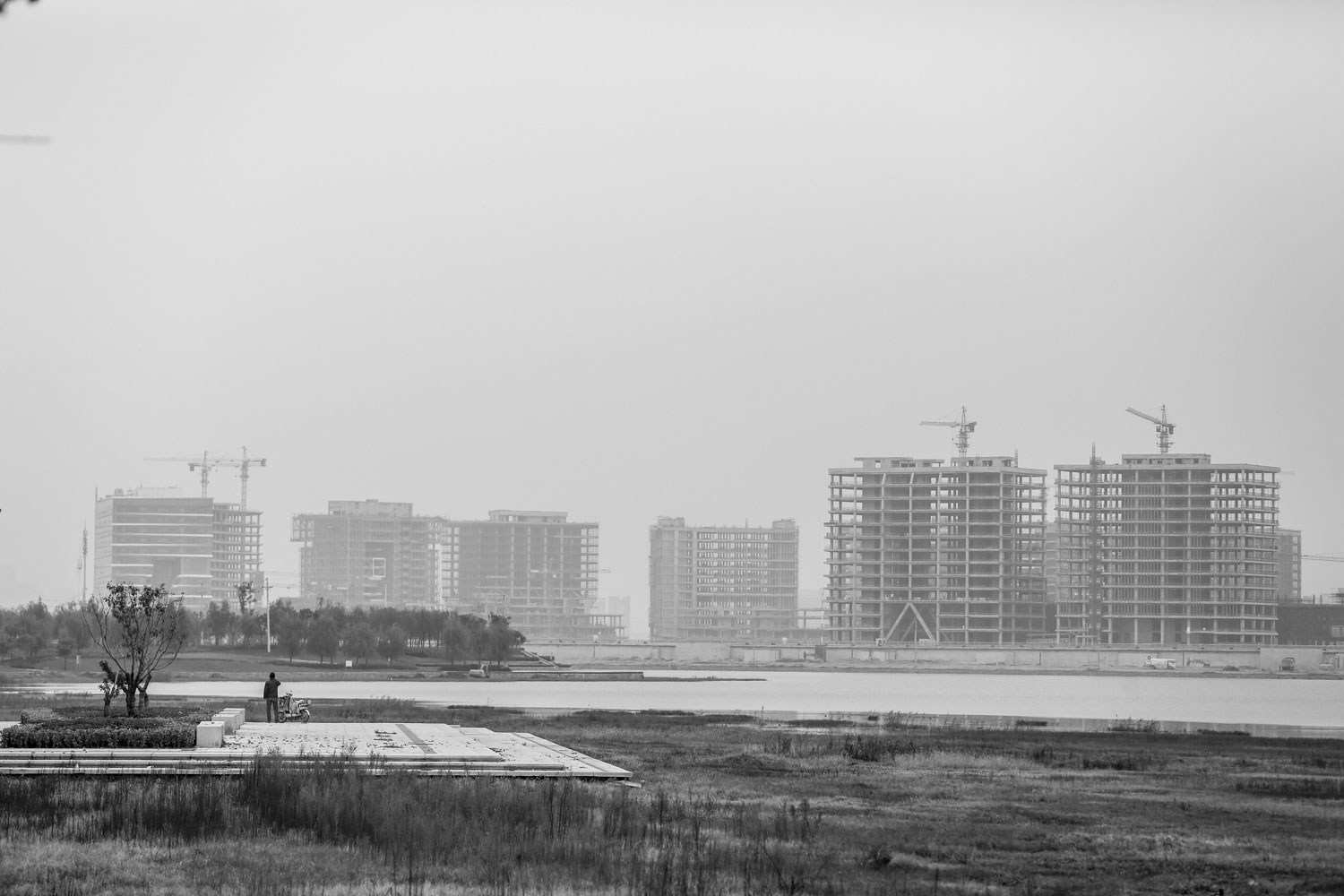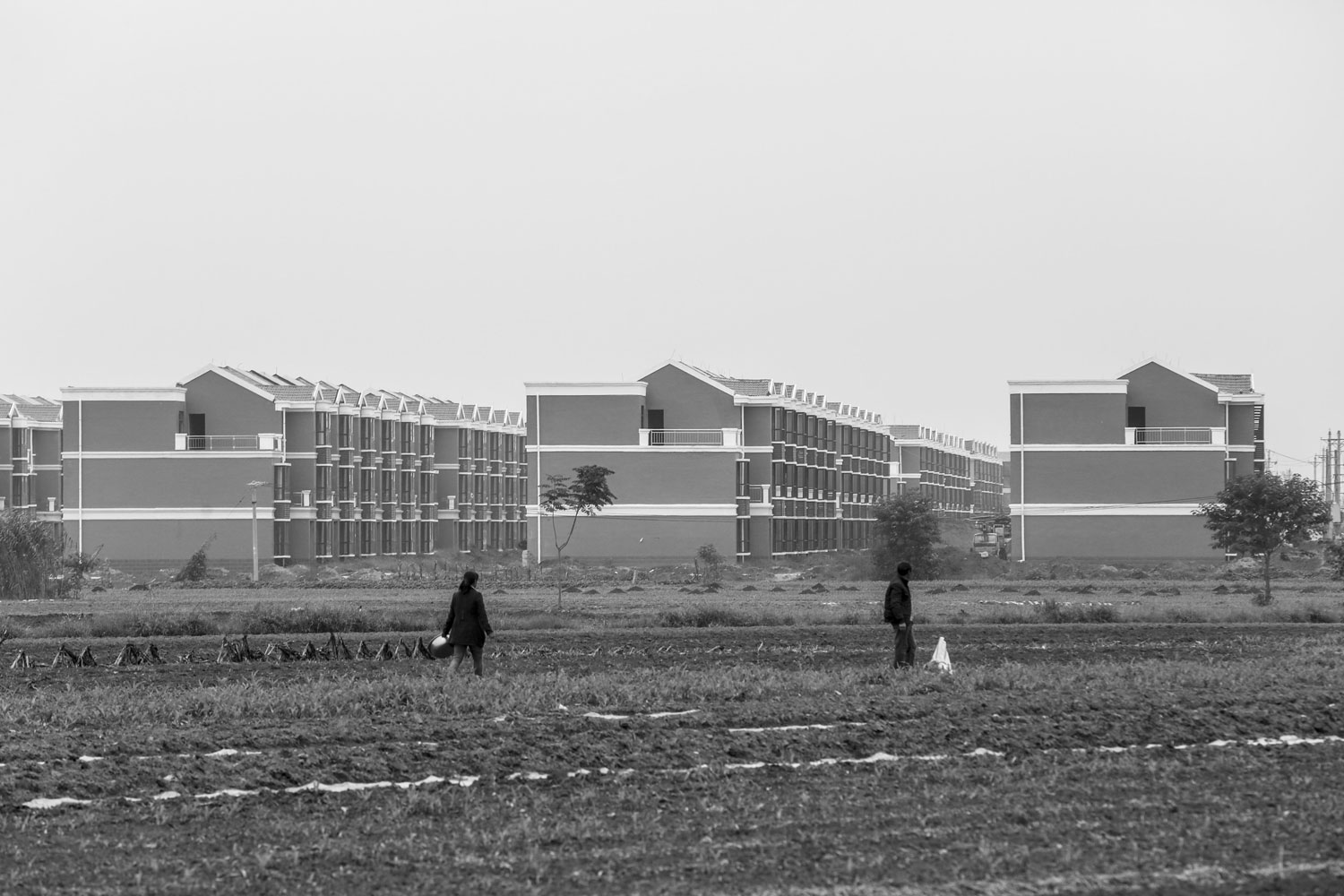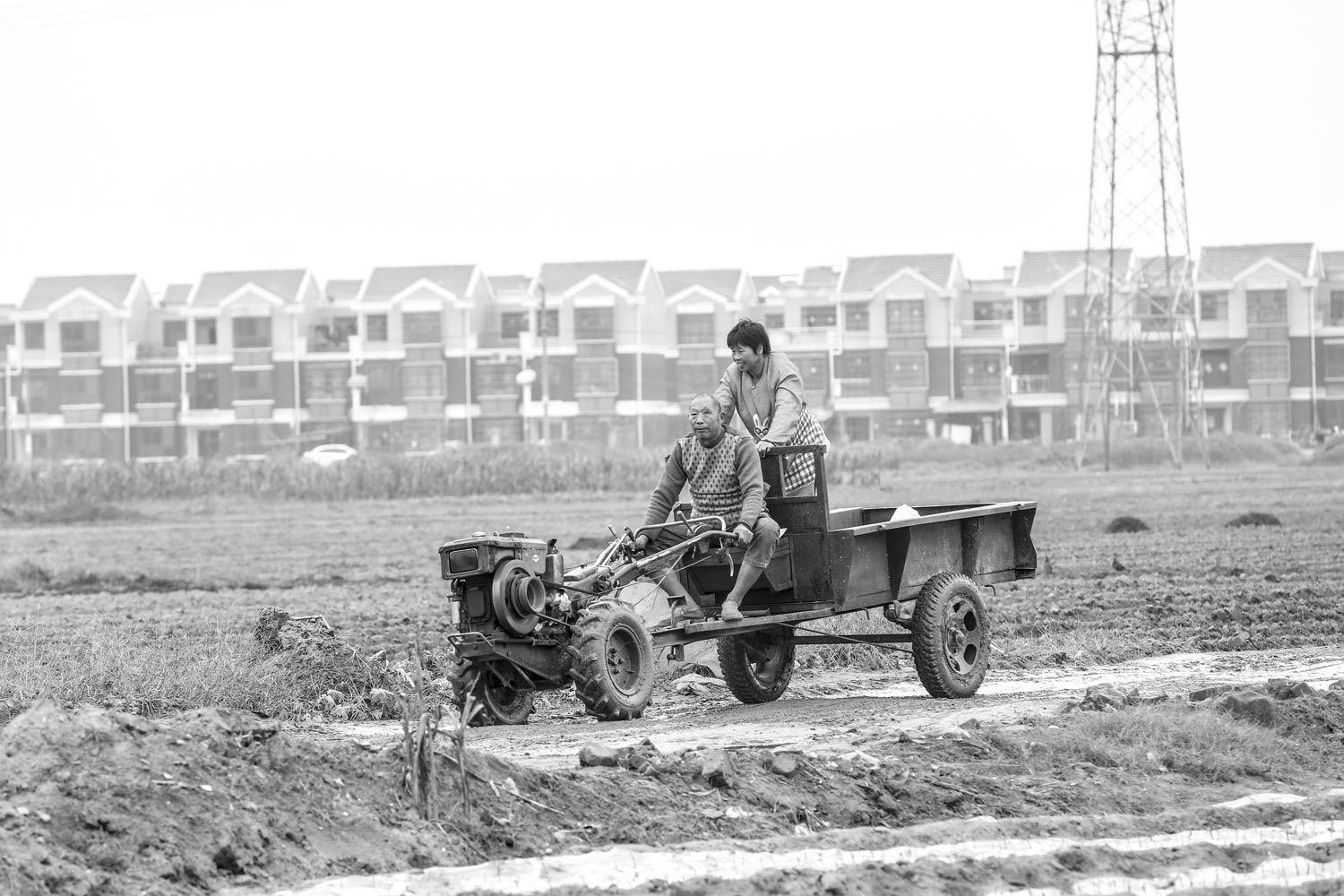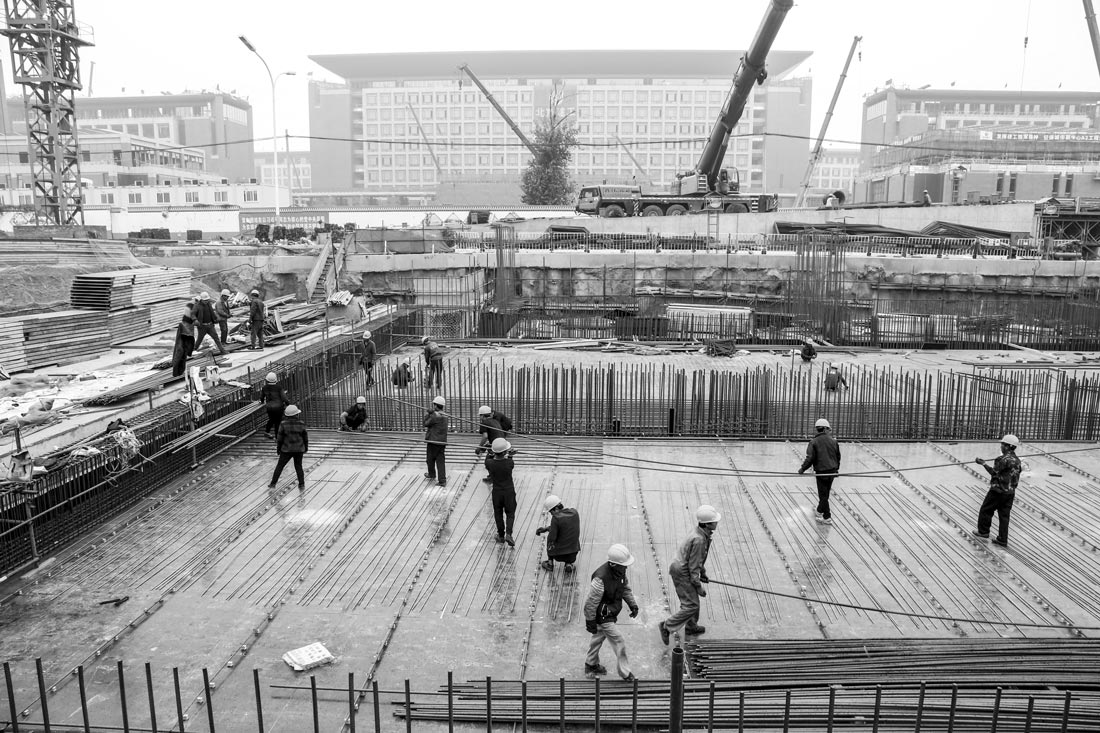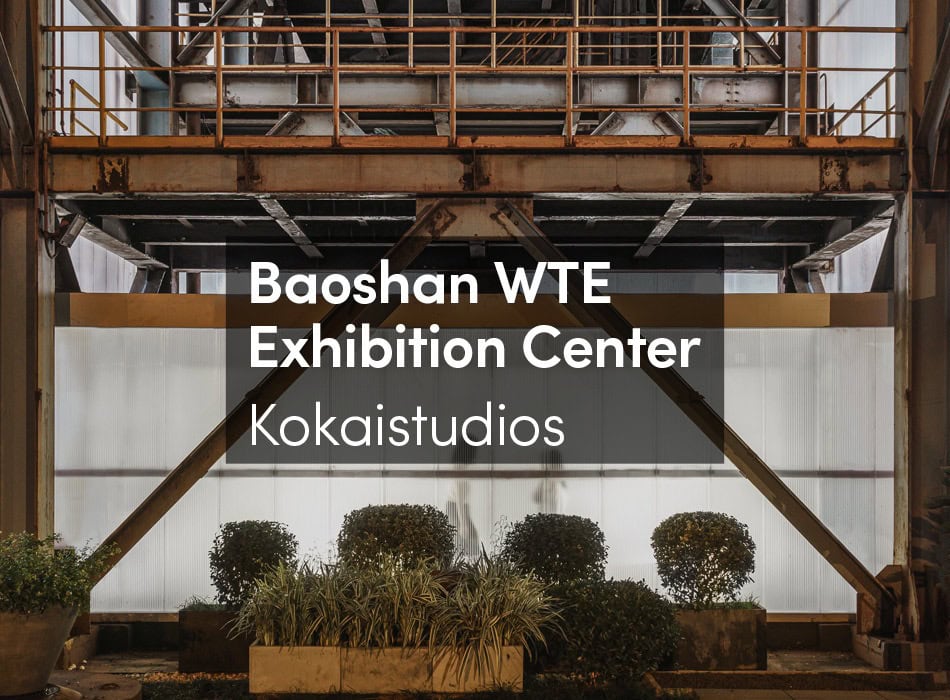Tongzhou new city is a new town located in the eastern suburban expansion of Beijing and is part of an administrative district whose transformation is under way. Zhaoqing New Area is a new town currently being built approximately twenty kilometres from the old city of Zhaoqing, in Guandong Province, at the western end of the Pearl River Delta. Zhengdong New District is a new town, almost completely finished, located near Zhengzhou in the inland Province of Henan.
Tongzhou, Zhaoqing and Zhengdong are three examples of the huge financial and organisational undertaking of the Chinese Government in “city making”. In fact, in the early twenty-first century, Chinese Government announced it had decided to build twenty new cities each year for the next twenty years; in total, approximately 400 new cities will be designed and built before 2020 (Shepard, 2015; Fang & Yu, 2016).
New towns[1] have an established history, a theoretical framework, well-known experiences not only in western planning practices and utopian theories (Hall, 1988; Hall & Ward, 1998; Wakeman, 2016), but also in China. Building new towns is part of Chinese urban strategies at least since the mid-twentieth century.[2] The satellite towns built between 1950 and 1980 were part of a policy of “industrialisation without urbanisation” (Pow, 2012; Ren, 2013). After the seventies, with the economic reforms and the opening up of the market, new towns became one of the tools to not only implement economic development strategies, but also attract businesses and investments and promote real estate (Glaeser et al., 2017). Chinese transition or, better still, the transformation of China “away from state socialism” (Ma, 2002; Yeoh, 2010) was boosted by the dynamics of urbanisation.[3] The relationship between the central city and its suburbs shifted «from one characterized by scattered industrial satellite towns with a vast rural area for vegetable cultivation, to one of suburban new towns and a globalising central area that formed a unified global city region» (Wu, 2016, p. 1139). New towns thus become part of a new, emerging space; they not only act as a multifunctional “planned support” for the market, but also as the new centers of the spatial reconfiguration of regional urban systems based on the global city regions model (Xu & Yeh, 2010; Shen & Wu, 2017).
As part of this physical, institutional, political and economic framework, Chinese new towns are less well-known and difficult to include in a discourse, tradition and process that has already taken place. It isn’t even easy to say exactly what new towns in China really are. The term new town indicates spaces that are different, even institutionally: new towns, new districts, new areas, new cities…. These words share the adjective new, but being new is a “provisional condition” and can always be replaced by something even newer. Furthermore, new is a very vague term (Wakeman, 2016) or, more radically, «is enabled by an assertion of distinctiveness which is frequently framed by forgetfulness or denial, not innocent of power relations» (Robinson, 2013, p. 663). In fact, imbuing the adjective new with its own interpretative content necessarily means specifying why it is new; it involves a comparison, a differentiation, a here and there. Therefore, the ambiguity of Chinese new towns is the ambiguity of an observation suspended between the adaptation to the theoretical and conceptual frameworks (and experiences) of the western urbanism and the openness towards an urban theory “beyond the west” (Edensor & Jayne, 2012).
The problem to identify and define the new towns is neither a purely linguistic problem, nor is it exclusively linked to the difficulty of circumscribing – in the restricted space of a new city masterplan – the accumulated transformations typical of an explosive urbanisation process that saves nothing. Nor does it depend on their differences vis-à-vis a theoretical framework and experiences on which the West has built a precise narrative that is not followed here. The misunderstandings, ambiguities and opaqueness that Chinese new towns create compared to something we believe we are already familiar with in terms of definition, space and history, makes both the new town and our observation ambiguous. Providing atlases and definitions, or identifying characteristics and superimposing models, does not help to clarify an ambiguity that is partly constitutive and partly contingent: new towns have blurred boundaries, they are developing, they escape any sure fire hypothesis. All we can do is examine them in an open way in order to understand not what they are, but what they do. What role does a new town play in the incredible urbanisation process of which it is part? What can help us understand this process? What does it reveal?
Tongzhou means revisiting Beijing, its logic of expansion and decentralisation. The district dons the image of a new city at least in the 2004-2020 Overall Planning of Beijing, followed by the plan drafted in 2005 completely redesigning the existing area which has now been completely built. Since then, the gradual erosion of the old city has led to the construction of the new city which in fits and starts has continued up to the present day. While the transformations were initially rather slow, in 2010 Tongzhou was relaunched by the 10th Congress of the Municipal Committee as “the new international modern city”. However, it was in November 2015 that Tongzhou grew in both size and quality. That year the government announced it wanted to shift the offices of the Beijing municipality to Tongzhou. An important decision that would double its population. Tongzhou will be a new town for more than two million inhabitants. It will also be the seat of the new administrative centre of the Beijing Municipality and have a new CBD. Finally, apart from being new, it will be international and modern, completely redesigned by a team of designers selected after an international competition.
Zhaoqing means revisiting the Pearl River Delta after studies concentrating on its densification and saturation. Like Tongzhou, Zhaoqing will double in size and population, and the administrative centre will be shifted. However, the numbers differ vis-à-vis Beijing. The new area – or at least the area earmarked in the 2012 masterplan to cover a 115 km2 surface which until then had been chiefly agricultural – will accommodate 600,000 new inhabitants before 2030. However, the numbers differ radically if we consider the seamless urbanisation extending east along the Xi Jiang River from Zhaoqing to Foshan and Guangzhou, occupying all the flat land available. In fact, in 2010 Zhaoqing was included in the Development Plan of Guangzhou-Foshan-Zhaoqing Economic Circle, i.e., in the Development Plan of the Pearl River Delta Region (2008-2020). Being part of the plan makes all the difference. It allows the city to become a protagonist (which it wasn’t), and gives it the confidence to play a strategic role in the entire region as a small city, an ecological and healthy liveable city providing a good life, close to big rivers and mountains still covered in woods.
Zhengdong means once again examining the optimisation of an inland area believed to be crucial for the Rise of Central China Plan (RCCP) adopted in 2004. Actually, the history of Zhengdong began a little earlier. The new city was announced and designed in 2001 as an addition to Zhengzhou, capital of Henan: a million new inhabitants and, again in this case, a doubling of the surface area (more than 150 km2), several buildings and residential compounds, the new CBD and, above all, the new high-speed train station. In fact, Zhengdong is part of the reinforcement of the infrastructure system in China which in recent years has led to the construction of a new airport, a new subway, new railways and stations for high-speed trains, as well as a fourth ring road connected to the main Beijing-Guangzhou road along which Zhengzhou is a crucial intersection. A large area of Zhengdong has been built and most of it is inhabited, but it still continues to grow and spread. Zhengbian is the linear city, designed between 2006 and 2009. It will cover roughly 300 km2 and will merge with Zhengzhou and Kaifeng, more than 50 km east. Finally it will gradually absorb many other small and big cities in this central region. Once again, the rise of new towns should be interpreted as part of much bigger areas and plans, for example the project by the Zhongyuan City Group that in Henan promotes integrated programmes for the cities of the Central Plains of China. Its ambitious aim is to make Zhongyuan one of the richest and biggest conurbations in the country.
The masterplans displayed in exhibition halls, and hung here and there in new expansion areas of Tongzhou, Zhaoqing and Zhengdong refer to a physical space that acts only as a purely technical support: strict zoning alternates Central Business Districts, consumer areas and shopping centres, residential areas – villas, gated communities, towers – scientific parks, etc., socially and physically separating residential, shopping, working and leasure spaces. The designed space of Chinese new towns challenges every principle of hierarchy, density, proximity, mixité, compatibility and incompatibility of functions, social relationships, uses and practices due to the way in which these principles have been developed and studied within compact and scattered twentieth-century morphologies (from the megalopolises by Patrick Geddes, Jean Gotmann and Peter Hall to the world cities by Fernand Braudel, John Friedmann, Saskia Sassen and Peter Taylor). Space in Chinese new towns is not defined and designed based on modern urbanity models nor it involves only the reproduction of the ingredients of a uniform and unifying global urbanity. At the same time, physical and social frameworks move beyond the traditional idea of city as a bounded and universally replicable settlement and reflect the differentiated, varied and multiscalar nature of contemporary urban reality (Brenner & Schmidt, 2015).
Studying Chinese New Towns starting from Tongzhou, Zhaoqing and Zhengdong means trying to re-discuss traditional narratives and possibly chip away at them. How does Tongzhou affect Beijing? How does it decentralise and rebalance? How does Zhaoqing contribute to the saturation of the Pearl River Delta? How Zhengdong enhances the centrality of Zhenzhou, of Zhongyuan, of the inner plain of China? In a sort of enlarged exploded diagram, the narratives and representations of Chinese urban expansion seem to be incapable of recognising distances and differences, save the ones involving scale and measure: in China everything is bigger, but if we change the lens we use, we basically always see the same objects. Revisiting Beijing, the Pearl River Delta and Zhengzhou is a way to get a better understanding of what these new towns do in these spaces, how they affect them, and how they change them (if they do). It also allows us to re-discuss any old categories which are perhaps no longer suited to describing contemporary cities. By adopting this approach, Chinese new towns become an object of study as well as a specific viewpoint with which to examine contemporary urbanisation and tackle the fact that we need to radically rethink the vocabulary, conceptualisations and even the epistemology of the urban (Amin & Thrift, 2017).
Chinese new towns are neither very exemplary nor new. When viewed from the point of view of the relationships they create with their environment, new towns do however appear more interesting than when observed within their boundaries. Not due to any original traits they may have when compared to the external environment, but rather to the way in which their contradictory assertion pries open a world, and with it the language to describe it. Considered thus, yes, Chinese new towns are new. They oblige us to radically rethink how to say and to make the city, whether in China or elsewhere.





